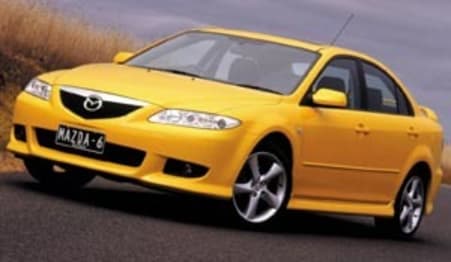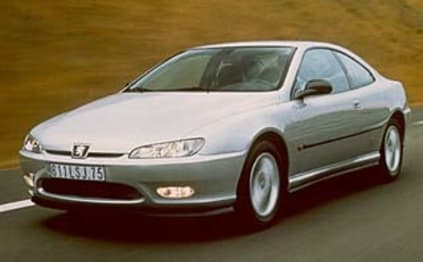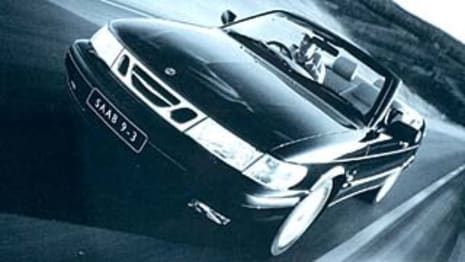
Used Volkswagen Bora review: 1999-2005
- Volkswagen Bora
- Volkswagen Bora 1999
- Volkswagen Bora 2000
- Volkswagen Bora 2001
- Volkswagen Bora 2002
- Volkswagen Bora 2003
- Volkswagen Bora 2004
- Volkswagen Bora 2005
- Volkswagen Bora Reviews
- Volkswagen Reviews
- Volkswagen Sedan Range
- Sedan
- Volkswagen
- Used Car Reviews
- Buying tips
First it was a Jetta, then it became a Bora, now it’s a Jetta again. Confused? Well don’t be it’s simply that the Bora name didn’t catch on and VW returned to the Jetta name it used on its booted-Golf from way back in the 1970s. Quite what VW thought it would achieve by switching names isn’t clear, but whatever it was it was a marketing move that failed.
Where the Bora failed to capture the imagination of the market the re-born Jetta is doing good business for VW and seems to be going from strength to strength. Perhaps the problem was that VW was trying to make the Bora something it could never be when it was simply a Golf with a boot. The Bora was made out to be a more sporting model whereas the Jetta is made from more humble stock.
MODEL WATCH
At its birth the Jetta was simply a Golf with a boot. It was conceived to suit older buyers who liked the security a boot provided and were put off by the lack of security in a Golf hatch. The Bora was the Jetta with different badges, but there was a change of character that came with more sporting name. The Bora was more of a sports sedan than its more humble predecessor, even though it was still spun off the Golf hatchback. While the Golf was intended to compete with less pretentious rivals VW pitched the Bora at more lofty targets, like the 3-Series BMW, Volvo S40 and Lexus IS200.
From the boot forward the Bora shared much with the Golf, the front-end sheetmetal was essentially the same, the cabin was much the same, the main differences were in the power and drive train which VW claimed at the time made the Bora “Australia’s fastest VW”.
At launch VW offered the Bora with the choice of a 2.0-litre single overhead camshaft four-cylinder engine that boasted 85 kW at 5200 revs and 170 Nm at 2400 revs, and a 2.3-litre single overhead camshaft V5 which produced 110 kW at 6000 revs and 205 Nm at 3200 revs. Either could be linked to a five-speed manual gearbox or four-speed auto. Following an update in 2001 the output of the V5 was boosted to 125 kW at 6000 revs and 220 Nm at 3200 revs.
VW also introduced a V6 4Motion all-wheel drive model in the same update. The 2.8-litre double overhead camshaft V6 produced a healthy 150 kW at 6200 revs and 270 Nm at 3200 revs. The 4Motion was only available with a six-speed manual gearbox with the final drive through all four wheels. A rigid body shell formed a stable platform that was the perfect foundation for a sporty sedan.
The 2.0-litre and V5 models had the same MacPherson Strut and coil spring front suspension with triangulated lower control arms, along with the same rear Torsion beam axle. The V6 4Motion boasted independent suspension at both ends, with coil springs and anti-roll bars.
Brakes were discs all round, with ABS anti-skid protection across the range, and ESP an added feature on the 4Motion. All Boras were packed with standard features, which included power steering, cruise control, power windows and mirrors, air-conditioning, alloy wheels, immobiliser and good quality sound systems.
IN THE SHOP
Owners have had a mixed run with the Bora. Some report no problems, but others have had plenty of trouble, enough even for them to ditch their cars rather than keep paying the bills.
Look for electrical woes, particularly with the window lifts, but they can also have trouble with engine electrics with airflow meters and oxygen sensors. The latter can send the fuel consumption rocketing if they fail, and may not send any signals to the driver that there’s a problem while driving.
Ignition coils can also be an irritating problem. Check the auto if fitted, particularly check it for smooth shifting and no problems in engaging gears. One owner has reported a gearbox meltdown after 60,000 km or so, which should serve as a warning of potential trouble.
The 2.0-litre engine has a cam timing belt, which needs replacing around 100,000 km, the V5 and V6 have chains that don’t require replacement. Check for a service record, VW’s don’t appreciate being neglected. Dirty oil means sludge and sludge means trouble.
IN A CRASH
Dual airbags provide good protection in a crunch, the VW chassis is stable and responsive, and there’s ABS to help avoid trouble. The 4Motion all-wheel drive adds to the on-road safety.
OWNERS SAY
Rob Mirfin has thoroughly enjoyed his 2001 VW Bora V6 4Motion and says the 4Motion system is a wonderful safety feature in adverse conditions. It’s done 117,000 km, and while he’s had problems with the ignition coils and oxygen sensors (it’s on its third set), he says it’s a fabulous car.
Travis Nilsen bought his Bora in 2005, but noticed it was pinging shortly after buying it. He was told it needed the best quality PULP from BP only, and although the car drove very well on the high quality fuel he was concerned the pinging problem would return, so sold it. He says the fuel economy was good on long trips, averaging 7.7 L/100 km, but disappointing around town where it averaged up to 16 L/100 km. He has bought a new Golf, which he’s very happy with. He says that if he had his time over again he would have steered away from the Bora.
Rodney Barlow-Pye bought a Volkswagen Bora 2.0 in 2001, and having owned Fords and Holdens says it is the best car he’s ever owned. It has done 300,000 km without any major problem, and it still looks new and feels very solid. He’s so happy with it that he’s become a VW fan.
John Gregory had a less than happy experience with his 2002 Bora, which he says was so expensive to repair that he had to cut his losses and sell it. It had several problems, in and out of warranty. Both right and left window regulators had to be replaced, the water pump failed, the engine electronics were unreliable, and the cooling fan burned out.
Marina Avgeris has been told that the automatic transmission in her 2002 Bora 2.0-litre needs rebuilding at a cost of more than $5000 despite having done just 63,000 km. It recently began rattling and was difficult to shift into reverse gear.
LOOK FOR
• Generous boot
• Balanced, responsive handling
• All-wheel drive safety (4Motion)
• Good performance
• Wobbly electrics
• Regular servicing
THE BOTTOM LINE
Well styled compact sedan with sporty credentials, but dodgy electrics can be frustrating and expensive to repair.
RATING
65/100
Pricing
| Year | Price From | Price To |
|---|---|---|
| 2005 | $3,190 | $7,260 |
| 2004 | $3,190 | $7,260 |
| 2003 | $3,190 | $7,920 |
| 2002 | $3,190 | $7,920 |
| 2001 | $3,080 | $7,920 |
| 2000 | $3,080 | $6,050 |
| 1999 | $3,080 | $6,050 |
Pricing guides
Range and Specs
| Vehicle | Specs | Price* | |
|---|---|---|---|
| 2.0 | 2.0L, PULP, 5 SP MAN | $3,080 – 4,840 | 1999 Volkswagen Bora 1999 2.0 Pricing and Specs |
| 2.3L V5 | 2.3L, PULP, 4 SP AUTO | $4,070 – 6,050 | 1999 Volkswagen Bora 1999 2.3L V5 Pricing and Specs |
Other cars to consider
$3,190
Lowest price, based on third party pricing data




















